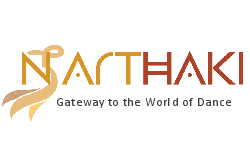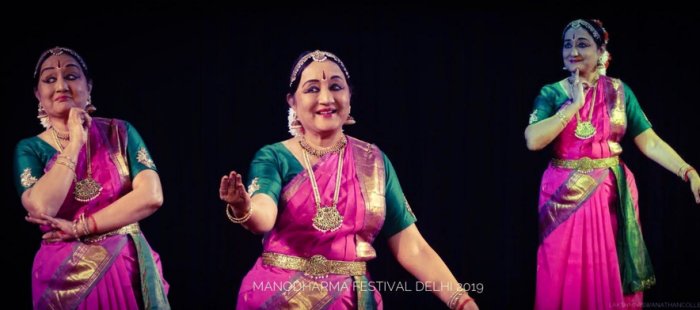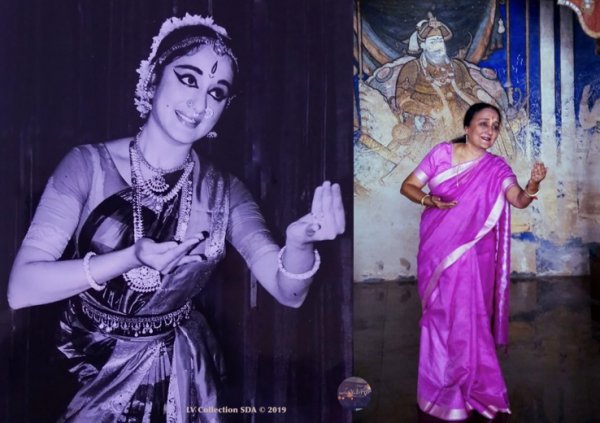 |
  |
 |
  |
The Art and Legacy of Lakshmi Viswanathan: Dancing through time - Jeetendra Hirschfeld e-mail: sathirdance@gmail.com March 23, 2025  Renowned as Nritya Kalanidhi, Lakshmi Viswanathan was a celebrated Bharatanatyam artiste, scholar, and writer. She was known for her mesmerising performances and innovative choreography for group productions. Alongside her illustrious dance career, she authored four highly acclaimed books and contributed extensively to journals, newspapers, and dance portals. Her erudite lectures, captivating demonstrations, and popular masterclasses made her a favourite among dance students worldwide. She also held the esteemed position of editor at the Kalakshetra Journal. I knew Lakshmi for a long time, and over the decades, my relationship with her evolved - first as a rasika, and later as a collaborator and friend. She would often call me her sparring partner. We shared a deep interest in Bharatanatyam history, particularly Thanjavur, which has been the heart of South Indian music and dance for centuries. Lakshmi's familial ties to Thanjavur gave her a deep historical and personal connection, and our research frequently intersected with this rich heritage. Over the years, we collaborated on several research projects, one of the most significant in her later years being the Tagore Fellowship, where we focused on Thanjavur's history. We were also developing lecture and dance-theatre performances based on my original research on important but largely forgotten historical women of Thanjavur, such as Princess Vijaya Mohana Muktamba (1845 - 1885), daughter of King Sivaji II. Unfortunately, most of these projects remained unfinished. The one that came to fruition in 2022 centred on the famous 19th-century courtesan Tanjore Gnyana (1857 - 1922), whom I have researched extensively. As part of Gnyana's death centenary that year, we sought to recreate one of her most celebrated performances - held at Royapuram Railway Station, Madras, in December 1875 - where she danced before Prince Edward of Wales and an assembly of Indian royalty. This revival was presented at Kalakshetra in August 2022. Lakshmi deeply revered the devadasis or courtesans - the historical custodians of Bharatanatyam. In this article, I briefly reflect on her interactions with devadasis and how their stories and artistry shaped her journey. A journey in search of the Devadasis In the 1970s and early 1980s, Lakshmi embarked on a journey to seek out devadasis. She was driven by curiosity - she wanted to understand for whom the varnams, padams, and javalis she had studied and performed were originally composed. While she had trained under some of the most iconic nattuvanars of her time, she always felt that a crucial voice was missing. Lakshmi travelled across Tamil Nadu, visiting villages to meet devadasis, many willing to share their insights. One figure who made a lasting impression on her was Pandanallur Jayalakshmi (1930 - 2017), the famous disciple of Nattuvanar Meenakshisundaram. Lakshmi met her in 1980, but this was not their first encounter. In the 1950s, she had seen Jayalakshmi perform at a private gathering at her Cenotaph Bungalow. Lakshmi, then about ten years old, watched alongside her mother and her younger sister, Sujaya Menon. Nattuvanar Muthiah, the son of Meenakshisundaram, conducted the performance, while Thanjavur Kittappa and Mrinalini Sarabhai were present. Even as a child, Lakshmi recognised that she was witnessing something extraordinary. With a radiant smile illuminating her face, Jayalakshmi moved with agility, effortlessly navigating a wide range of movements. That performance left such a deep impression that decades later, Lakshmi could still recall the repertoire Jayalakshmi had presented - the Tanjore Quartet varnam Manavi and the Tamil padam Theruvil Varano (Muthu Thandavar). The latter was a striking example of Jayalakshmi's ability to improvise, sustaining the heroine's yearning for Shiva over several minutes with masterful expressivity. The Devadasi's approach to abhinaya When Lakshmi met Jayalakshmi again in 1980, the veteran dancer generously shared insights into her approach to abhinaya, often singing and dancing to demonstrate her unique interpretations. Many of the pieces she performed had been composed specifically for her by her guru, Meenakshisundaram. Through these interactions, Lakshmi gained a deeper understanding of how the devadasis' abhinaya contrasted with that of the nattuvanars. While nattuvanars prioritised technical precision and structured choreography suited for the proscenium stage, the devadasis embodied a more fluid, organic expression. Their abhinaya was not merely about technique but was intensely personal, shaped by lived experience. This gave their interpretations a natural, evocative quality. Lakshmi maintained her connection with Jayalakshmi over the years, and with her help, I was also able to meet her in the 1990s. In 2008, when Lakshmi published her book 'Women of Pride: The Devadasi Heritage' (New Delhi: Roli Books), she dedicated it to Pandanallur Jayalakshmi. Several years later, drawing from our combined notes gathered from Jayalakshmi and with the expertise of Nattuvanar Gopalakrishnan of Pandanallur, Lakshmi and I reinterpreted the varnam Sarasudu Nīveyani (raga Vachaspati) for performance. This piece, composed by Meenakshisundaram in praise of Rajah Shanmuga Rajeswara Sethupathi (1909 - 1967) of Ramnad, had a remarkable history - Jayalakshmi had performed it before the Rajah, and so captivated was he by her dance that he later married her. Aesthetic exploration in abhinaya Lakshmi's interactions with devadasis influenced her approach to abhinaya - not in a way that sought to imitate them, for imitation was impossible, but in a manner that absorbed their essence and transformed it into something uniquely her own. She integrated the discipline of the nattuvanars with the devadasis' spontaneous, evocative approach to abhinaya. This synthesis enriched her artistry, allowing her to balance precision with emotional depth. For Lakshmi, the nayika (heroine) was always at the centre of her abhinaya, and she approached each piece with a nuanced understanding of the heroine's emotions, relationships, and desires. Music was central to her abhinaya; she internalised each composition before setting it to dance. Once she could sing a piece with full understanding, she worked on its emotional context, ensuring that every expression resonated with the audience. Lakshmi's performances thrived on an intuitive synergy with her musicians. She worked closely with them to ensure that the tempo, emotional tone, and improvisational elements aligned with her interpretation. The interplay between her 'Manodharma' and the musicians' responses created an immersive experience that was both structured and spontaneous.  I had the privilege of witnessing her creative process many times at her home. We worked on several Tanjore Quartet compositions that were part of my repertoire and that she wanted to incorporate into hers, including varnams such as Nee Saati Dora (Bhairavi), Sarasijaakshudu (Kalyani), and Dani Sati (Todi). In our rehearsals, she meticulously explored each piece, refining the abhinaya through a detailed study of the sahitya and sangatis. One of my fondest memories is of her rendition of the javali Entati Kuluke (raga Kalyani, composer Dharmapuri Subbarayar), introduced to her by her sister, Charumathi Ramachandran. I had seen her perform it many times, but the most unforgettable moments were when she sang and danced at home, in intimate settings. Each time, her abhinaya evolved subtly, shifting in response to the music, the mood, and the moment. Lakshmi had a remarkable ability to blend classical narratives and aesthetics with a modern sensibility, ensuring that Bharatanatyam remained a living, evolving art form. Her rare talent for connecting Bharatanatyam's historical foundations with modern artistic expression ensured that her work remained deeply rooted in tradition and dynamically relevant to contemporary audiences. Lakshmi's artistry was extraordinary, but beyond that, her generosity in sharing knowledge, her humour, and her love for Bharatanatyam will always stay with me.  Jeetendra Hirschfeld is a Bharatanatyam artiste and dance historian specialising in Thanjavur Natyam, Tanjorean courtesans, and the royal heritage of Thanjavur. He is the Founder and Artistic Director of the Sathir Dance Art Trust (Amsterdam - Chennai), established in 1995. With a prolific body of work, he has authored over a hundred essays on Bharatanatyam and its history, making significant contributions to the field through his extensive scholarship. Access his work Post your comments Please provide your name and email id along with your comment. All appropriate comments posted with name and email id in the blog will also be featured in the site. |